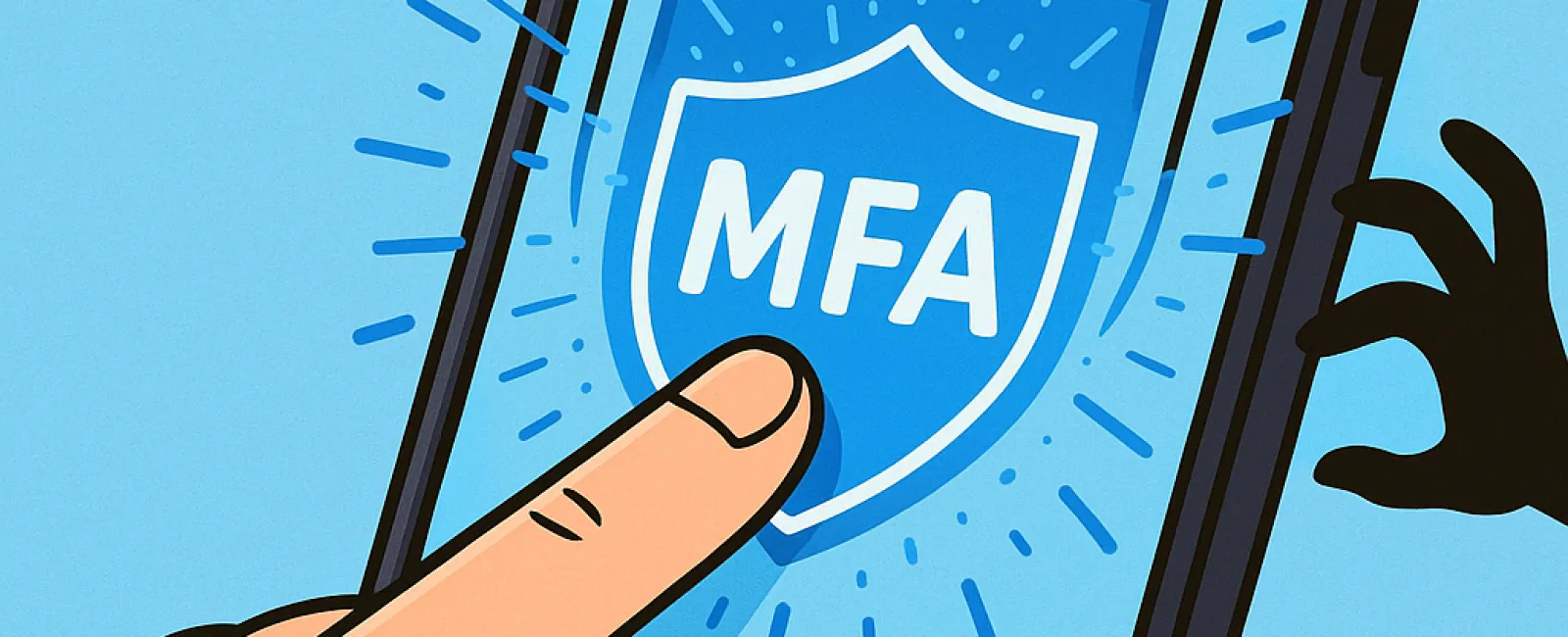October 27, 2025
Just as you wouldn't drive without buckling your seatbelt or leave your office unlocked overnight, you shouldn't browse the web without enabling multifactor authentication (MFA).
MFA acts as an extra powerful lock on your digital doors. Instead of depending solely on a password — which can be stolen, guessed, or phished — MFA introduces an additional verification step like a text message code, an authentication app, or a fingerprint scan. This means even if a hacker compromises your password, they hit a wall without that crucial second defense.
A Single Extra Step That Makes a Massive Difference
Think of your password as locking the front door at night. MFA is like activating your security alarm system before bedtime. While not mandatory, it offers peace of mind knowing you have multiple layers of protection in case one is breached.
MFA simply adds a swift, extra confirmation step to verify your identity when logging in. Terms like "two-step verification," "two-factor authentication," and "one-time password" all describe the same concept: requiring two or more verification methods before granting access to your sensitive data.
There are many MFA methods available: confirmation emails during account creation, bank security questions, text verification codes, push notifications, and phone call prompts. Most of these require just a single tap or quick input.
Everyday Scenarios Where MFA Protects You
From your side, MFA is effortless — a quick tap or one-time code entry. But for hackers, it's a major obstacle. If they try to infiltrate your account, MFA sends you an alert or requests a code before access is granted, alerting you instantly about a possible breach. This gives you the timeframe to reset your password and protect your data before damage happens.
Even if an attacker deceives someone into sharing login credentials, MFA stops them from gaining entry without that second verification step. Research by Microsoft reveals that enabling MFA reduces account compromise risks by over 99.2%, soaring to 99.99% protection for accounts with MFA activated.
Where and How to Implement MFA
Enable MFA especially on these critical accounts:
- Banking and financial platforms
- Email and cloud storage services
- Social media profiles
- Work-related logins containing client or confidential information
Setting up MFA is typically straightforward. Major platforms often offer built-in MFA options; simply activate the one that suits you best and incorporate it into your daily routine. Using an authenticator app can elevate your workplace login security even more.
In summary, MFA is a quick, cost-free defense that prevents most account hacks. Investing a few minutes today to enable MFA can save you from costly data breaches and prolonged recovery later.
The simplest route to configuring MFA is to reach out to your IT provider. A skilled Managed Service Provider (MSP) can streamline the entire process. If you need a cybersecurity expert, click here or call (541) 726-7775 to schedule a 15-Minute Discovery Call with our team now.




